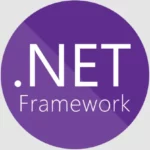The step by step guide to creating a Salesforce app. Learning about each stage of Salesforce development.
It is not easy to implement a variety of approaches, techniques and methodologies in the field of software development. The whole process requires a profound knowledge of the subject. One of the most popular technologies up to date is Cloud solutions.
Development Tools for Salesforce Apps

The high interest in this technology creates a demand for developing Cloud systems within larger Cloud ecosystems. Salesforce applications fall into this category because of the development process, which is ultimately held inside a Cloud system.
When talking about environments designed for Salesforce development, it is necessary to mention Force.com. Because the website is built by means of a Salesforce Integrated Development Environment, it can be smoothly integrated through a plugin.
There are plenty of tools designated for creating a Salesforce app. Various metadata components, Visualforce, Apex and more are among the most commonly used. There is also a local file storage solution for data.
The developers had to relocate the data to the source control system to make some changes and then return it back into the storage. The most popular control systems are Subversion and Git.
There are many components to the development process and each of them requires a special approach. That is why there are always many different professionals working on a single app. These are the most common specialists involved.
- Product Managers – These people are responsible for taking care of different business aspects and their confirmation.
- Release Managers – They are essential for coordinating the release dates of the product.
- Salesforce Developers – They are the professionals in charge of directly developing the app and writing codes.
- Quality Assurance Managers – These pros are responsible for bug testing and discovering various issues.
- Salesforce Consultants – They present solutions needed to establish and optimize a business process.
The following stages illustrate the way in which the process of Salesforce app development works.
Source Control Repository is something that should be created right away. There are numerous advantages to having separate repositories for every single project. The same approach is also relevant for metadata storage in a master branch.
There are many different professionals involved in creating a Salesforce solution. Release Managers work on setting up separate branches for all the features. Specific developers have to handle it. Another responsibility is writing package.xml manifests and managing metadata via Force.com.
The process of coding itself starts in a sandbox. The Salesforce sandboxes are unique because they are not connected to the main production. Thanks to it, all the changes implemented within a sandbox will remain there. This prevents any interference with the production process.
The developers utilize the Integrated Development Environment of Force.com to take necessary data from the sandbox. All the required changes are implemented to submit the code to the Git storage. Although they have to perform some testing before committing the code.
The code is then relocated to the sandbox for additional development. After that, it can be completed in the repository. It is essential to make sure that nobody is engaged with the code at the same time. Such simultaneous work can result in a variety of errors.
The next step is the code testing. Quality Assurance managers have to move the code in their own freshly made sandboxes. There are times when the managers only have to test one of the features instead of the entire code. For this purpose, they create partial sandboxes and transfer a piece of code there.
There are situations when Quality Assurance specialists open the sandbox for other colleagues in order to work together. This allows a more thorough examination of the code segments. If they manage to find mistakes in the coding, the process begins from the start.
The finishing testing requires checking the code for user acceptance. Both Release and Project Managers perform further testing in a partial sandbox. After that, they can start preparing the product for presentation. If there are still some issues with the app, the process starts over again.
Performance testing is the one left after the product release. This time, an intermediate sandbox is created. It has many similarities with the app itself. Various types of final tests are performed here. If there are no errors left, the app is ready for production.
Join 25,000+ smart readers—don’t miss out!






